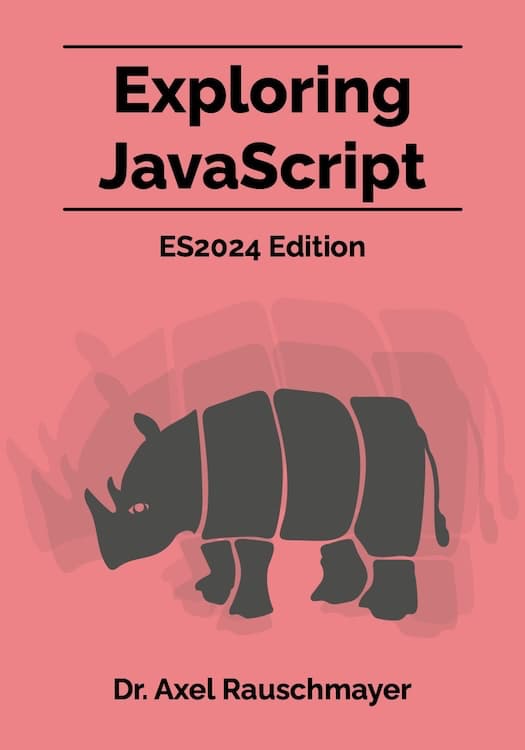2011-09
Google’s Alex Russell on JavaScript versus Dart
Google Dart to “ultimately ... replace JavaScript”
- New post 2011-10-10: “Google Dart – overview and comments” (with all the information from the official Dart launch at the GOTO conference)
- New post 2011-09-13: “Google’s Alex Russell on JavaScript versus Dart”
- 2011-09-14: Rewrote of the section “What does it all mean?” and added new material on universal virtual machines. Added Crockford quote under “Other voices on Dart”. Added a conclusion.
- 2011-09-13: More on Eich’s comments at Hacker News.
“Dart, a new programming language for structured web programming”This post explains what Dart is all about and how it relates to JavaScript.
JSHint – a JavaScript code quality checker
Currying versus partial application (with JavaScript code)
2011-08
How to write and unit-test universal JavaScript modules (browser, Node.js)
Node.js has a very nice module system that is easy to understand, yet distinguishes between the exports of a module and things that should be private to it. This post explains how the code of a Node.js module can be modified so that it works on both Node.js and web browsers. It also explains how to unit-test such code.
Spreading arrays into arguments in JavaScript
Sometimes, one needs to spread the elements of an array, to use them as the arguments of a function call. JavaScript allows you to do that via Function.prototype.apply, but that does not work for constructor invocations. This post explains spreading and how to make it work in the presence of the new operator.
An introduction to JSDoc
Check out my book (free online): “Speaking JavaScript”. Updated version of this blog post: chapter “JSDoc: Generating API Documentation”.
Update 2011-08-19. Tweet from JSDoc’s creator, Michael Mathews:
Awesome article about JSDoc. I learned (er remembered) a few things from reading it myself! via @rauschma 2ality.com/2011/08/jsdoc-intro.html
JSDoc is the de facto standard for documenting JavaScript code. You need to know at least its syntax (which is also used by many other tools) if you publish code. Alas, documentation is still scarce, but this post can help – it shows you how to run JSDoc and how its syntax works. (The JSDoc wiki [2] is the main source of this post, some examples are borrowed from it.)
What is the correct media type for JavaScript source code?
JavaScript’s JSON API
JavaScript performance: Array.prototype versus []
Update: Inspired by a comment from Kevin Roberts, I’ve added a third way of accessing generic methods, and a conclusion.





